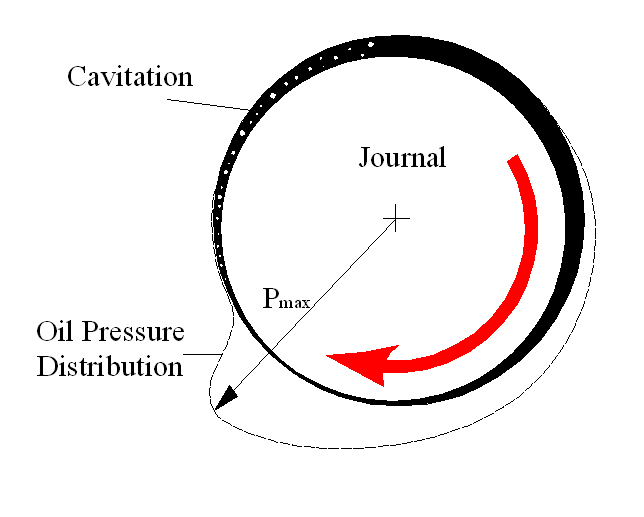Cavitation
As a general rule the most critical part of the lubrication system in any race engine is perhaps the big-end bearing. To ensure that this big-end bearing remains fully lubricated, the oil pump delivery pressure has to be such as to have overcome all the (pressure) losses down the line, as well as that necessary to overcome any centrifugal effects of the crankshaft.
For this pressure to be maintained, the flow from the oil pump needs to make up for the losses through bearing leakage around the system. But if either the oil flow or its pressure should fall below that required then the bearing will be irretrievably damaged.
That is not the full story though. In this context we have assumed that the oil is a uniform and single entity that is incompressible and behaves in a consistent way, more or less as a Newtonian fluid. This is far from the case.
Simply looking at the products of combustion and the amount of gases circulating within the system, the oil in any crankcase will be contaminated with unburned or partially burned fuel, water and, often in large amounts, air. Some of this air will be dissolved in the oil while some of it will be only entrained in it. If the temperature inside the sump is greater than around 100 C then the water will evaporate and take no further part in this discussion, as will any entrained air that is centrifuged out of the system via some means of separation (swirl pot or other separator). What remains in most practical situations is unburned fuel, dissolved air and, of course, the oil.
Regular readers will know that the pumping action of the rotating journal in a plain bearing builds up a ‘wedge’ of high-pressure oil in the converging zone between journal and bearing to support the load. In the diverging zone [Fig. 1] the oil pressure will fall away, and if this sudden change in pressure causes the solubility of the fuel or oil to exceed the saturation pressure at the prevailing temperature, a process known as cavitation can occur.
It has been suggested that there are two types of cavitation. The first is associated with air or its constituent gases dissolved in the oil. When the pressure falls to that of the lowest around the bearing, these gases are purported to come out of solution and will be carried around the oil circuit to be dissolved back into it as the pressure increases once again. This type of cavitation is not particularly severe and is thought to have minimal detrimental effects.
The second type is that of vapour cavitation, and because it is changes from a liquid to a gas and back again during the process, it is potentially the most damaging. As a big-end journal rotates in the bearing shell, the load and its direction will change significantly throughout the engine cycle. At the high speeds of a race engine, the frequency at which this happens is so high and the time taken for it to happen so short that the oil pressure in the oil rapidly falls and the fuel dissolved boils instantaneously. As the pressure rises again, the bubbles caused by the evaporation will collapse and go back into solution, the repeated action of which may ultimately fatigue the bearing surface.
Often discounted or even unknown by some engineers, bearing cavitation can be highly destructive and difficult to diagnose.

Fig. 1 - Distribution of oil pressure in a plain bearing
Written by John Coxon